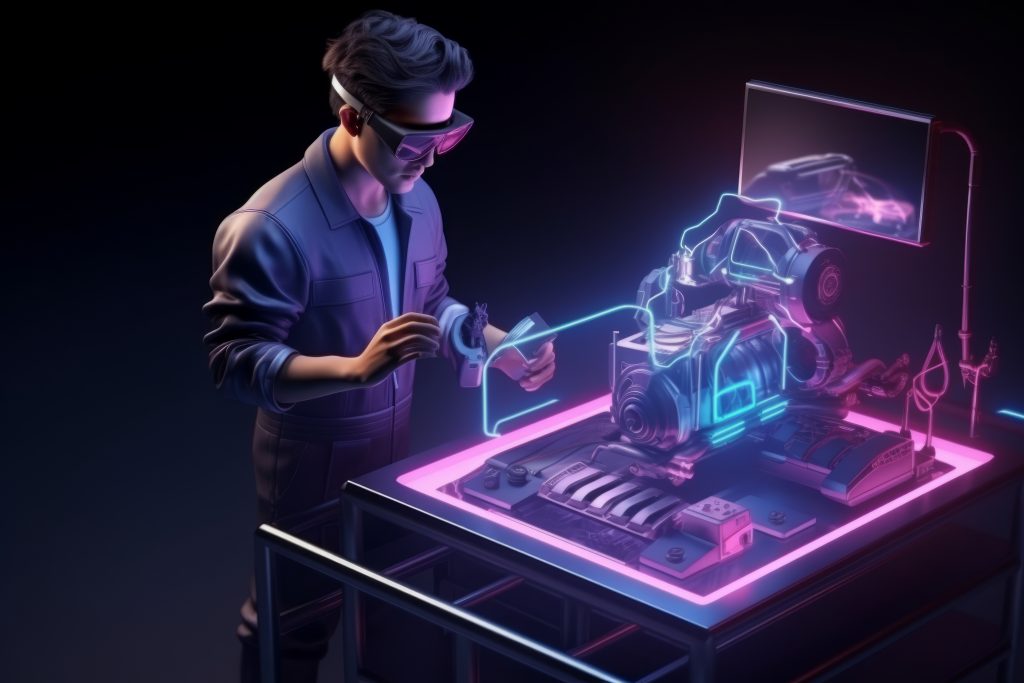Rob Newell, VP of Customer Adoption APJ at New Relic, highlights the challenges in ensuring super app reliability and how companies can use advanced solutions to anticipate and solve potential issues, improving app performance and user satisfaction.
In a rapidly evolving digital landscape, super apps are becoming increasingly important, particularly in markets like India with a growing digital consumer base. Gen Z’s expectations for seamless service integration and a low tolerance for poor app experiences raise the stakes for app developers and companies. Observability and data-driven engineering are crucial for navigating these challenges, offering ways to improve app performance, reliability, and user satisfaction.
The recent interaction between Nisha Sharma, Principal Correspondent at CIO&Leader, and Rob Newell, VP of Customer Adoption APJ at New Relic, dives into the challenges and strategies of developing and maintaining super apps that meet modern consumer expectations. Newell discusses the engineering challenges in the digital ecosystem, the importance of customer experience, and how companies can stand out through app performance and reliability.

, VP of Customer Adoption APJ
New Relic
The conversation reveals that the future of super apps depends on technology, user expectations, and market trends. Observability and data-driven engineering are key to addressing future demands. Through this discussion, we understand the strategic needs of companies aiming to succeed in the competitive super app market.
CIO&Leader: Can you elaborate on the unique engineering challenges that super apps face in today’s digital ecosystem, mainly considering Gen Z consumers’ high expectations?
Rob Newell: Gen Z consumers in India, where smartphone use is rising, seek apps that consolidate payment and daily activities for convenience and smooth digital experiences. Due to compatibility and data synchronization issues, this demand challenges super apps integrating diverse third-party services, such as payment systems and ride-sharing.
Inadequate integrations disrupt services and degrade user experiences. Enhancing digital agility poses a significant hurdle, as engineering teams rely on disparate app performance monitoring tools. This fragmentation complicates timely and proactive issue resolution. High traffic spikes intensify the urgency to address problems before affecting customers. Still, the reliance on isolated tools complicates issue identification and resolution, potentially causing downtime, unsatisfactory digital interactions, and customer loss. Addressing these obstacles is crucial for the evolution of India’s super app ecosystem.
CIO&Leader: Why do you believe customer experience is pivotal for the success of super apps, and how should companies prioritize this in their development and maintenance strategies?
Rob Newell: In India, one-third of customers may abandon a brand after a single negative experience, highlighting users’ high expectations from super apps for seamless digital interactions. A significant 58% of users have pointed out poor user experience as a primary reason for uninstalling an app.
As super apps grow more integral to daily life, ensuring quick and reliable response times becomes crucial for maintaining customer loyalty. Organizations that focus on identifying and resolving customer pain points stand to benefit significantly. For instance, Navan, initially a startup travel app, evolved into an international corporate travel and expense management platform by partnering with major tech and retail brands. Facing the challenge of scaling and enhancing user experiences, Navan’s engineering teams recognized the limitations of using multiple monitoring tools. By embracing observability and establishing key performance indicators (KPIs) to track incidents identified proactively rather than through customer feedback, Navan significantly improved its issue detection rate—from detecting only 20% of issues through monitoring tools to identifying nearly 90% with observability. This shift allowed the app to address potential problems before negatively impacting users. Thus, prioritizing innovation and continuously refining super apps through observability is a critical competitive advantage.
CIO&Leader: In the context of fierce market competition among super apps, what elements constitute a great customer experience, and how can companies differentiate themselves on this front?
Rob Newell: For super apps, great customer experience translates to consistent, reliable performance 24/7. It includes smooth integration of third-party services onto the app, maintaining uptime, and resolving any issues as quickly as possible so that there’s minimal impact on the end user. These are the tenets of great user experience and are often the greatest challenges super apps face. To differentiate themselves in a saturated market, super apps must be able to overcome these challenges. Super apps require all-in-one observability that collates, analyses and provides actionable insights on what’s going wrong, where it’s going wrong, and how to fix it.
CIO&Leader: How do observability solutions enhance super apps’ performance and reliability, and could you provide examples of how they’ve been successfully implemented?
Rob Newell: Observability significantly benefits super apps, offering engineers insights to improve efficiency, drive growth, ensure uptime and reliability, and enhance customer experiences. The 2023 Observability Forecast reports an average annual ROI of 114% for observability in India, with 53% of organizations identifying it as essential for achieving business objectives.
For example, BigBasket, India’s online food and grocery store with quick commerce, faced error rates of 5-10% due to configuration, logging, or status message issues at the API level. By implementing observability strategies, BigBasket reduced error rates to under 1% in a month. Using incident alerts, mobile, and customer event integrations, BigBasket gained visibility into issues, allowing the company to identify and fix problems faster and before they escalate, resulting in improved customer satisfaction.
CIO&Leader: Could you define data-driven engineering in the context of super apps and explain why it’s essential for their success? How does it influence decision-making in app development?

Rob Newell: Data-driven engineering involves leveraging telemetry data from engineering tools and platforms to enhance the efficiency of software engineering teams. This approach emphasizes making decisions based on concrete data insights rather than subjective opinions or instincts.
Adopting a data-driven engineering strategy is essential for super apps, where performance is critical. It brings transparency to decision-making and allows engineers to monitor, comprehend, and improve performance using data across the software development lifecycle. Additionally, analyzing data to measure customer impact helps identify customer needs, ensuring that the super app’s business decisions, products, and services effectively address those requirements.
CIO&Leader: How can observability solutions enable data-driven engineering practices for super apps, and what are the key metrics or data points should teams focus on?
Rob Newell: Adopting a data-driven approach to engineering ensures super apps improve uptime and operational efficiency while fuelling innovation and growth that’s sustainable and scalable. Super app operators must connect data from customer experiences to broader business teams, engineering, and operations. As these apps generate vast amounts of data, they often dwell in silos, and most of it isn’t put to good use. With centralized data management platforms like all-in-one observability, organizations can consider all the moving parts required to provide a holistic view of the digital experience. This ensures that customer experience isn’t compromised and that issues are proactively fixed before they spiral into bigger problems for app users.
CIO&Leader: Considering super apps’ bandwidth and storage space concerns, how can developers optimize their apps to minimize these issues while maintaining a high-quality user experience?
Rob Newell: Super apps can be resource-intensive, impacting device and battery life. Balancing functionality with resource optimization is crucial because slow apps can be frustrating. Engineering teams are challenged with optimizing code to eliminate inefficient algorithms and memory leaks. All-in-one observability captures error details device and environment data, like CPU data, memory, available storage space, battery level, internet connectivity status, number of users affected, and more. Such data is essential for engineering teams to act quickly on corrections.
CIO&Leader: From your perspective, what is the future of super apps in terms of technology evolution, user expectations, and market trends? How should companies prepare to meet these future demands?
Rob Newell: Technological evolution has been the key to enabling super apps’ ideation and ongoing impact. As we’ve experienced, super apps continue to disrupt traditional businesses through personalized, cost-effective customer experience and engagement. These apps will continue to integrate advanced technologies such as AI, machine learning, and even blockchain technologies in an ongoing desire to drive more profound and more personalized customer experience in a secure and performant manner.
Across markets and industries, customers continue to leverage centralized super apps for day-to-day engagement in healthcare, education, logistics, and government services. With continued technology evolution, super apps will drive deeper reach and expansion into new markets and industries.
As super apps grow in popularity, competition will undoubtedly become more common, providing the end consumer with choice and driving even more importance into driving delightful, personalized, and insightful customer experiences. The most effective way to prepare for future demands is to first delight customers by delivering a fantastic super app with unbeatable uptime, availability, and customer experience. Full stack observability provides robust telemetry data and customer insights across the technology stack so that the engineering and customer teams can take a data-driven approach. This ensures apps are built in a highly performant, reliable, and secure manner.
CIO&Leader: What are the biggest challenges in ensuring the reliability of super apps, and how can observability help preemptively identify and address potential issues?
Rob Newell: App developers are undoubtedly familiar with the headache of pinpointing the root cause of an outage. Traditional error reporting tools provide insight into outages, but they only provide basic information like stack trace and console logs. On the other hand, Observability captures comprehensive information like network logs, repro steps, and session profiles about each crash, enabling engineering teams to find and fix issues faster. Such tools help teams understand how many users are impacted by an outage and the segment they belong to, offering insights into how each downtime incident impacts users and assisting engineers in prioritizing issues.
The time taken to launch an app once it is opened is a crucial moment in user engagement. It marks the first interaction with an app, and the bounce rate will be high if it takes too long to launch. Mobile app users expect apps to launch between two to three seconds. Issues that delay an app’s startup time can significantly impact the user experience and bottom line. Observability solutions can help organizations detect issues like slow app startup times and identify their root cause, ensuring that teams focus on optimizing launch time.
CIO&Leader: With 70% of customers willing to warn others about poorly performing apps, how can companies proactively leverage observability and data-driven engineering to improve app performance and user satisfaction?
Rob Newell: By leveraging full-stack observability, engineers can take a data-driven approach to their work because they have all the telemetry data at their fingertips to make informed decisions. They can pinpoint potential degradations in the stack before they turn into incidents. Full stack observability combined with a data-driven engineering approach also turns reactive practices into proactive habits, resulting in higher uptime, greater reliability, and happier customers. Together, they empower engineering teams to understand how their work positively affects critical business drivers and the bottom line.
Image Source: Freepik
